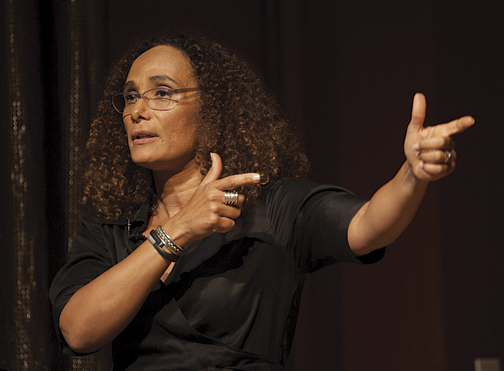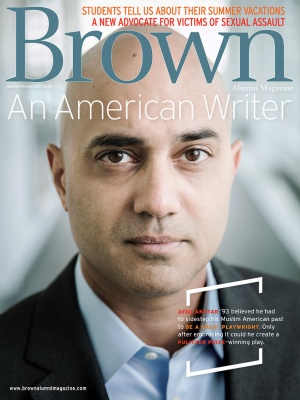The campus is alive with students returning to their academic “home”
for another year, and others eager to begin their Brown journey. It’s a
reminder that they all chose this University for what sets this
university apart from other leading institutions of higher education.

Mike Cohea
Tricia Rose.
This Brown legacy has been nurtured over the years by a long and extraordinary line of teacher-scholars, many of whom I have learned about from alumni who can recall these professors with remarkable clarity—even when it has been years since their time as students.
Last spring, we honored two of these—Andries van Dam and Richard Fishman — both of whom just celebrated the tremendous milestone of fifty years of teaching, research, and service at Brown.
Andy and Richard arrived on campus in 1965, launching careers that would exemplify the commitment of Brown’s faculty to work hand-in-hand with students to help them become independent and courageous thinkers. In an era of paper, Andy, a professor of computer science, helped students see that computers would unlock new ways of communicating. Through his teaching, Andy’s students discovered that computers were not only enormous machines capable of storing massive amounts of data, but also pathways to new forms of creativity.
Brown students benefited from being on the frontier of computing education, in no small part because the University discovered an essential principle early on: The best way to integrate computers into teaching is to hire extraordinary teachers.
Richard, a professor of visual art, has exemplified a similar ideal for integrating the arts into student learning. He always recognized the importance of teaching art to any interested student, not just those concentrating in the creative arts. Throughout Richard’s career, he has been instrumental in guiding students to explore the connections between the arts, science, and technology. Richard and Andy are among the many faculty members who make students full partners in faculty scholarship.
Today a new generation of exceptional teachers is cultivating creativity, intellect, and bold thinking in Brown’s students. Such teachers as Tricia Rose, professor of Africana studies and director of the Center for the Study of Race and Ethnicity in America, nurture in students the ability to integrate ideas into lives of making a difference in their communities and their world. Similarly, Gilad Barnea, associate professor of neuroscience, is leading students to the exciting frontier of a growing field of study.
Tricia’s students learn how popular music and other aspects of contemporary culture shape narratives of justice and social policies. At the same time, Gilad works with his students in the classroom and in his laboratory to help them understand the interplay between genes, neural circuits, and behavior, tapping into the mysteries of what makes us human.
These teachers, and many others like them, will be shaping the Brown hallmark of innovative education for generations of students to come. They represent just a few examples of what makes Brown exceptional today, and what will continue to distinguish the University in the future.
This moment at the beginning of a new year is a time to pause to celebrate these teacher-scholars and the experience they offer that excites our returning students. As we continue to build momentum and progress in shaping Brown’s future, the University remains committed to the values that have defined our excellence for centuries.




